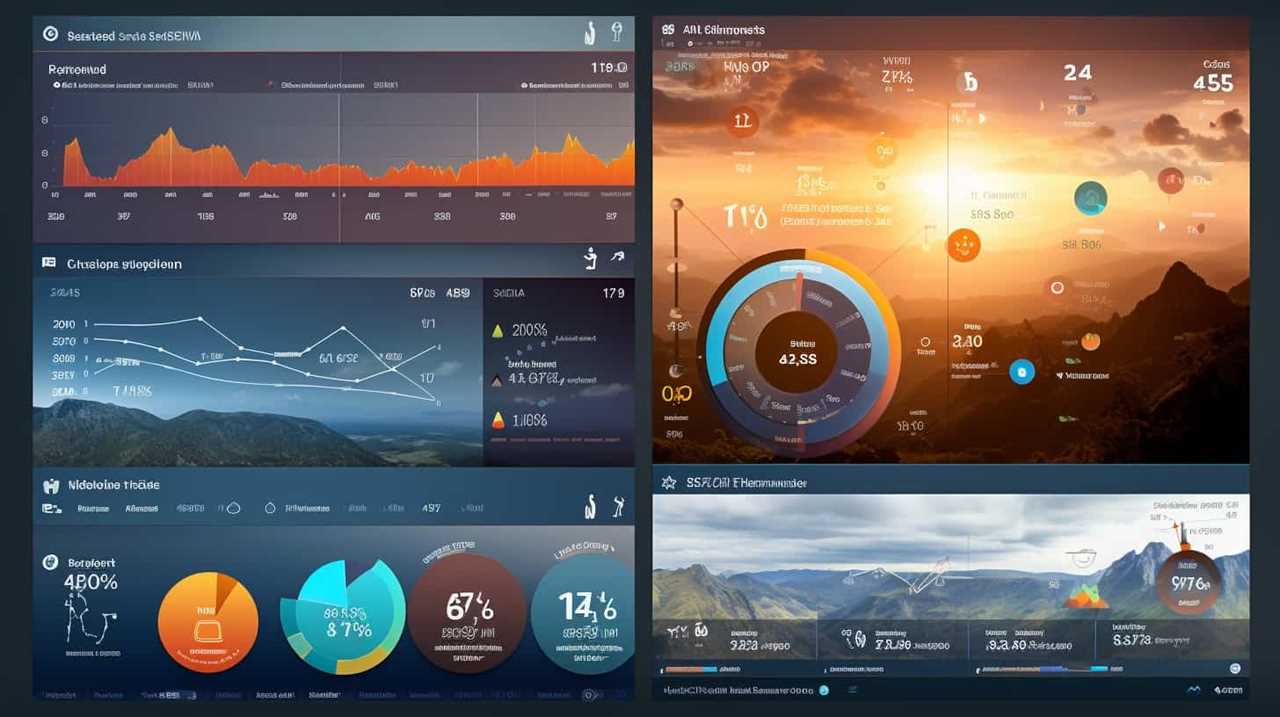To boost media buying efficiency with advanced programmatic techniques, focus on leveraging machine learning for precise audience segmentation and predictive analytics for campaign forecasting. Optimize real-time bids by reacting to market trends and auction dynamics, and use dynamic creative strategies to personalize ad experiences at scale. Incorporate direct deals and private marketplaces for more control, while ensuring brand safety and fraud prevention. Exploring these methods further will uncover even more ways to maximize your ad ROI.
Key Takeaways
- Implement real-time bidding and dynamic bid adjustments based on auction insights to maximize ad spend efficiency.
- Utilize predictive modeling and audience segmentation for targeted, high-value impressions and reduced media waste.
- Automate creative personalization and asset management for scalable, relevant ad experiences.
- Leverage transparency tools and deal strategies like private marketplaces to access premium, brand-safe inventory cost-effectively.
- Monitor campaign performance continuously with cross-device attribution and optimize strategies proactively for better ROI.
Leveraging Machine Learning for Audience Segmentation

Machine learning has revolutionized audience segmentation by enabling more precise and dynamic grouping of users. Predictive modeling plays a pivotal role, analyzing vast data sets to identify patterns and predict future behaviors. This allows you to create highly targeted segments that reflect real user interests and intent. Audience clustering, a key technique, groups users based on shared attributes or behaviors, helping you discover hidden segments you might not have identified manually. With machine learning, these processes become faster and more accurate, allowing you to adapt quickly to changing audience dynamics. Instead of relying on static demographic data, you gain deeper insights into user preferences, which enhances your targeting strategies. For example, understanding projector contrast ratio can be crucial in visual content analysis, just as it is in media targeting. Additionally, incorporating adaptive algorithms can further optimize campaign performance by continuously refining audience segments based on real-time data. Leveraging dynamic segmentation enables marketers to respond swiftly to shifting trends and behaviors, ensuring campaigns stay relevant. Incorporating user behavior analysis further enhances accuracy by considering how users interact with your content and ads, leading to more personalized targeting. Furthermore, integrating automated data processing streamlines the segmentation process, saving time and reducing manual errors. Ultimately, leveraging machine learning in audience segmentation boosts campaign relevance and drive better engagement.
Real-Time Bidding Optimization Strategies

Real-Time Bidding (RTB) optimization is essential for maximizing ad performance and achieving your campaign goals. To succeed, you must refine your bid strategy based on auction dynamics. Understanding how bid adjustments influence outcomes allows you to allocate your budget more effectively. Focus on adjusting bids for high-value inventory and times when your target audience is most active. Monitoring auction dynamics helps you identify patterns and optimize bids accordingly. Consider this table for quick insights:
| Auction Dynamics | Optimization Strategy |
|---|---|
| High competition | Increase bids strategically |
| Low competition | Lower bids to save budget |
| Peak activity periods | Raise bids during high engagement hours |
| Off-peak periods | Reduce bids to maximize ROI |
Additionally, understanding auction competition can help you better anticipate and respond to market fluctuations. Incorporating real-time data into your bidding decisions can further improve your targeting precision and overall effectiveness. Staying informed about market trends can also provide additional insights for optimizing your bid strategies. Employing data-driven decision-making techniques allows for more agile adjustments and improved campaign outcomes. Moreover, leveraging advanced targeting options can help you reach your ideal audience more efficiently. Mastering these tactics will enhance your RTB performance, ensuring you win valuable impressions efficiently.
Dynamic Creative Optimization Techniques

Building on your understanding of bidding strategies, optimizing creative content dynamically can considerably boost campaign performance. Dynamic creative optimization (DCO) leverages dynamic content to tailor ads in real-time based on user data, behaviors, and context. This approach enables you to deliver highly relevant ad variations, increasing engagement and conversion rates. By implementing creative personalization, you guarantee that each viewer receives an ad that resonates with their interests and preferences. DCO tools automatically assemble different creative elements—images, headlines, calls-to-action—adapting them on the fly. This flexibility maximizes your ad’s relevance without manual redesigns, saving time and resources. Ultimately, dynamic creative optimization boosts efficiency, improves user experience, and drives better ROI for your programmatic campaigns.
Programmatic Direct Deals and Private Marketplaces

When negotiating programmatic direct deals and private marketplaces, you can leverage deal strategies to secure better terms and pricing. These channels also give you access to exclusive inventory, ensuring your brand appears in premium placements. Plus, they offer greater transparency and control, so you can manage campaigns more effectively. Incorporating sound design techniques can further enhance your creative assets, making your advertisements more engaging and memorable. Additionally, understanding delivery logistics can help optimize the timing and placement of your ads, leading to improved campaign performance. Employing audience targeting strategies can also maximize the relevance and impact of your ads within these premium environments. Staying mindful of self-awareness can aid in better understanding your audience’s preferences and behaviors, ultimately refining your approach. Exploring media buying trends can provide insights into evolving market practices, helping you stay ahead in competitive advertising landscapes.
Deal Negotiation Strategies
Have you ever wondered how advertisers secure premium inventory while maintaining control over their campaigns? Deal negotiation strategies in programmatic direct deals and private marketplaces hinge on understanding auction dynamics and bid strategies. To succeed:
- Clearly define your target audience and inventory preferences to set expectations upfront.
- Negotiate fixed prices or preferred deals to lock in premium placements.
- Use data to inform bid strategies, adjusting bids based on auction insights.
- Establish transparent terms around inventory access and performance metrics.
- Incorporate audience targeting strategies to optimize campaign relevance and effectiveness.
Exclusive Inventory Access
Exclusive inventory access through programmatic direct deals and private marketplaces allows you to secure premium inventory with greater control and transparency. By forming exclusive partnerships, you gain priority access to high-quality placements that aren’t available via open exchanges. This approach minimizes competition and ensures your ads run in brand-safe environments. Additionally, utilizing private marketplaces enables more precise targeting and better alignment with your brand values. Here’s a quick comparison:
| Feature | Benefit |
|---|---|
| Premium inventory | Higher engagement and brand safety |
| Exclusive partnerships | Priority access and reduced competition |
| Programmatic direct deals | Greater control over placements |
Using private marketplaces, you negotiate directly with publishers, securing premium inventory tailored to your campaign goals. This strategy maximizes ad performance and strengthens your brand presence in exclusive spaces. Incorporating hybrid tuning concepts can also optimize your overall media buying strategy for better results. Implementing programmatic advertising techniques enhances efficiency and allows for more sophisticated media buying strategies, including inventory management that ensures optimal placement and cost-effectiveness. Moreover, understanding audience segmentation can further refine targeting precision to improve campaign outcomes.
Transparency and Control
Programmatic direct deals and private marketplaces give you unparalleled transparency and control over your ad campaigns. You can see exactly where your ads run, how much you pay, and who your audience is, thanks to robust control mechanisms. This level of ad transparency helps you optimize performance and ensure brand safety. Transparency and control are further enhanced by detailed reporting features, allowing you to evaluate campaign outcomes more effectively. With private marketplaces, you set specific deal terms, maintaining control over inventory quality and pricing. Here’s what you gain:
- Clear insights into inventory sources
- Precise targeting options
- Customizable deal conditions
- Real-time performance monitoring
- Integration with programmatic advertising tools enhances campaign management and data accuracy. This integration leverages automation to streamline workflows and improve decision-making. These control mechanisms empower you to make data-driven decisions, improve campaign efficiency, and reduce wastage. Additionally, understanding cookie management practices ensures compliance with privacy policies and builds user trust. Implementing ad verification measures further safeguards your campaigns from ad fraud and invalid traffic. Ultimately, private marketplaces and programmatic direct deals put you in the driver’s seat, giving you confidence in your ad investments.
Cross-Device Targeting and Attribution

Cross-device targeting and attribution have become essential components of effective programmatic advertising, enabling you to reach users seamlessly across multiple devices and accurately measure their interactions. Device fragmentation creates challenges, making it harder to connect user actions across smartphones, tablets, and desktops. That’s where cross screen analytics come in, helping you piece together user journeys and understand how audiences engage across devices. By leveraging these insights, you can deliver more personalized and relevant ads, increasing engagement and conversions. Proper attribution ensures you credit the right touchpoints, allowing you to optimize your campaigns effectively. This holistic approach minimizes wasted ad spend and maximizes ROI, empowering you to make smarter media buying decisions in today’s multi-device landscape. Incorporating vetted solutions can further enhance your targeting accuracy and reporting capabilities.
Incorporating Contextual and Semantic Targeting

Building on the insights gained from cross-device targeting and attribution, leveraging the context in which users engage can considerably boost campaign effectiveness. By analyzing contextual signals and applying semantic analysis, you can target audiences more precisely. Consider these key strategies:
- Use contextual signals like page content, keywords, and user intent to serve relevant ads.
- Employ semantic analysis to understand the meaning behind user searches and content interactions.
- Align ad messaging with the tone and themes of the surrounding content for better resonance.
- Avoid irrelevant placements by filtering out content that doesn’t match your brand’s context or audience interests.
Incorporating these techniques ensures your ads reach the right users, in the right environment, maximizing engagement and ROI.
Advanced Data Management Platforms (DMPs) Integration

You can improve your campaign performance by ensuring seamless data synchronization between your DMP and other platforms. This integration allows you to create more detailed and accurate audience segments. As a result, your targeting becomes sharper and more effective.
Seamless Data Synchronization
Seamless data synchronization is essential for maximizing the effectiveness of advanced Data Management Platforms (DMPs) integration. It guarantees your customer data remains accurate, up-to-date, and privacy-compliant across all systems. When synchronization works smoothly, you can confidently analyze customer behaviors and tailor your campaigns more precisely. To visualize the process:
- Data flows instantly between your CRM and DMP, maintaining consistency.
- Customer data updates automatically without manual intervention.
- Privacy safeguards ensure data privacy remains intact during sync.
- Real-time synchronization enables quick adjustments for better targeting.
Enhanced Audience Segmentation
With accurate and real-time data synchronization in place, advanced audience segmentation becomes more effective and precise. By integrating your Data Management Platform (DMP) with your programmatic channels, you can analyze customer journeys more deeply and refine audience personas. This allows you to identify high-value segments based on behaviors, preferences, and engagement patterns, enabling tailored messaging for each group. Enhanced segmentation helps you deliver relevant content at the right moment, increasing conversion chances. You’ll also be able to dynamically update audience segments as customer behaviors evolve, maintaining relevance throughout the campaign. This level of precision ensures your media buys are more efficient, reducing waste and maximizing ROI. Ultimately, integrating advanced DMP capabilities elevates your ability to target audiences with personalized, data-driven campaigns.
Utilizing Predictive Analytics for Campaign Forecasting

Have you ever wondered how predictive analytics can transform your campaign forecasting? It’s a game-changer, leveraging data forecasting and predictive modeling to anticipate outcomes more accurately. Here’s how it works:
- Analyzes historical performance data to identify patterns.
- Uses predictive modeling to project future campaign results.
- Adjusts strategies proactively based on forecast insights.
- Enables smarter budget allocation by estimating ROI.
Automation and Workflow Efficiency in Programmatic Buying

Automation helps you set up campaigns faster and reduces manual errors, saving you valuable time. Real-time optimization techniques allow you to adjust bids and creative elements on the fly for better results. By streamlining these processes, you’ll improve workflow efficiency and maximize your ad performance.
Streamlining Campaign Setup
Are you looking to make your programmatic campaign setup faster and more efficient? Streamlining this process saves time and boosts creative storytelling, enhancing user engagement from the start. To achieve this, consider these steps:
- Use pre-built templates for ad creatives and targeting parameters
- Automate audience segmentation to quickly identify high-value segments
- Integrate asset management tools for seamless creative updates
- Leverage workflow automation platforms to coordinate tasks and approvals
Real-Time Optimization Techniques
To maximize campaign performance, real-time optimization techniques enable you to adjust bids, creatives, and targeting parameters instantly based on live data. This agility allows you to refine programmatic storytelling, ensuring your messages resonate with your audience. By monitoring key metrics continuously, you can automatically implement ad frequency capping, preventing ad fatigue and overexposure. These techniques streamline workflow efficiency, reducing manual interventions and enabling faster decision-making. With automation tools, you can swiftly pivot strategies, test different creative variations, and optimize for better engagement. Real-time optimization guarantees your media buys stay relevant, targeted, and cost-effective, giving you a competitive edge in programmatic advertising. Embracing these techniques helps you deliver personalized, impactful campaigns at scale with greater precision.
Ensuring Brand Safety and Ad Fraud Prevention

How can you protect your brand in the complex landscape of programmatic advertising? Ensuring brand safety and preventing ad fraud are vital. To do this effectively, consider these strategies:
Protect your brand by prioritizing safety and fraud prevention strategies in programmatic advertising.
- Use brand safety tools that block ads from appearing on inappropriate or risky content.
- Implement advanced verification systems to detect and eliminate ad fraud.
- Regularly monitor your campaigns for suspicious activity or discrepancies.
- Partner with trusted supply-side platforms (SSPs) and demand-side platforms (DSPs) that prioritize transparency and security.
Frequently Asked Questions
How Does Programmatic Advertising Impact Overall Marketing ROI?
Programmatic advertising boosts your marketing ROI by enabling precise targeting through audience segmentation. You can optimize campaigns using attribution models to better understand which channels drive conversions. This data-driven approach allows you to allocate budget more effectively, improve ad relevance, and reduce wasted spend. As a result, you see higher engagement, increased conversions, and a stronger return on your advertising investment, making your overall marketing efforts more efficient and profitable.
What Are the Key Challenges in Integrating Multiple Data Sources?
When you integrate multiple data sources, you face key challenges like data silos, which prevent seamless sharing of information, and data normalization, guaranteeing consistency across diverse datasets. You need to break down silos and standardize data formats to create a unified view. This process requires careful planning, robust tools, and ongoing management to ensure your insights are accurate and actionable, ultimately improving your campaign effectiveness.
How Can Advertisers Ensure Compliance With Privacy Regulations?
You can guarantee compliance with privacy regulations by prioritizing data privacy and implementing robust consent management processes. Keep clear records of user consents and make it easy for users to update their preferences. Regularly review your data practices to stay aligned with laws like GDPR or CCPA. Educate your team about privacy requirements, and use privacy-focused tools to manage data securely, reducing the risk of violations and building user trust.
What Role Does Creative Personalization Play in Programmatic Success?
Creative personalization plays a essential role in programmatic success by delivering dynamic creative and personalized messaging that resonate with your audience. When you tailor ads based on user data, you increase engagement and conversion rates. Dynamic creative adjusts in real-time to user behavior, making your campaigns more relevant. By focusing on personalized messaging, you build stronger connections, improve ad performance, and maximize your media spend efficiency.
How Is Emerging Technology Influencing Future Media Buying Strategies?
Think of emerging technology as a compass guiding your media buying journey. AI-driven targeting sharpens precision, ensuring your ads reach the right audience at the right moment, like a lighthouse piercing through fog. Blockchain transparency acts as a crystal-clear mirror, revealing where your ad dollars go. Together, these innovations reshape strategies, enabling you to make smarter, more efficient decisions and navigate the future of media buying with confidence and clarity.
Conclusion
Harnessing advanced programmatic techniques transforms your media buying from guesswork to precision. While real-time bidding and machine learning sharpen your targeting, maintaining brand safety and preventing ad fraud guarantees trust. Imagine the contrast: seamless automation fueling efficient campaigns, yet vigilant safeguards protecting your reputation. Embrace these innovations to stay ahead—turn complexity into clarity, and data into impactful results. In this fast-evolving landscape, your strategic edge lies in mastering both technology and trust.









